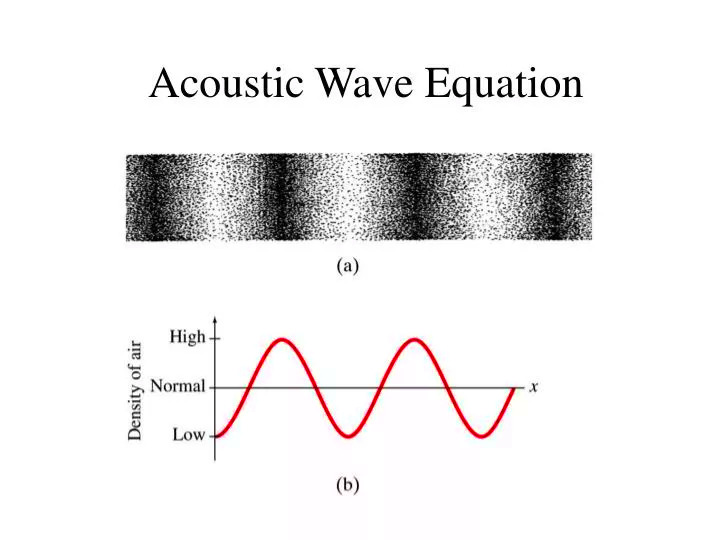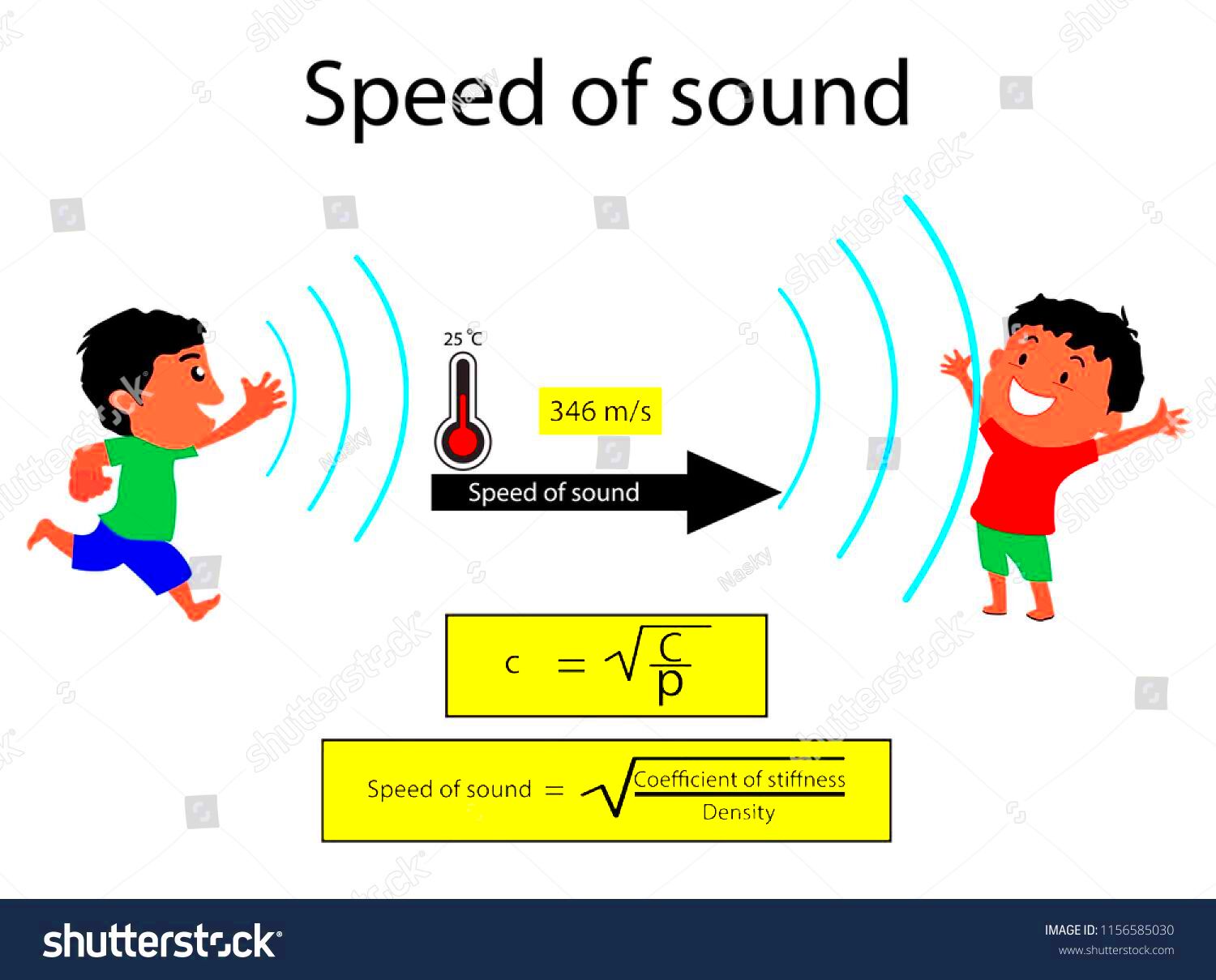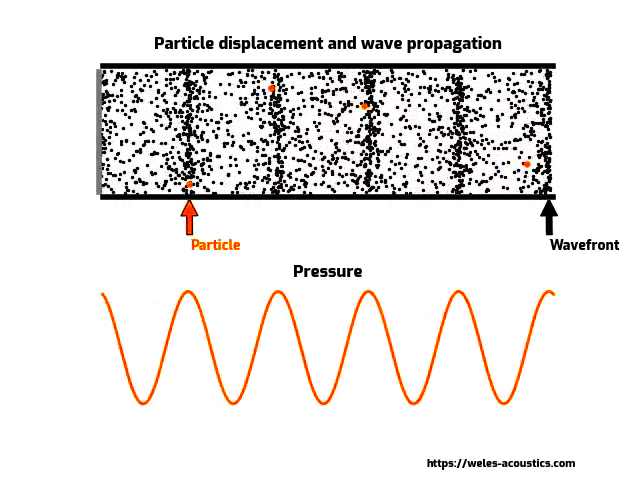Acoustic waves are pressure waves that travel through different mediums, such as air, water, or solids. These waves are created by vibrating particles and are crucial in various applications, from medical imaging to seismology. Velocity images are visual representations of how these waves move through different materials. They offer insight into the speed and behavior of acoustic waves, which is essential for understanding material properties and wave interactions.
Understanding Acoustic Wave Propagation

Acoustic wave propagation refers to how sound waves travel through a medium. The speed of these waves depends on the properties of the medium, such as density, elasticity, and temperature. In general, sound travels faster in solids than in liquids or gases. There are different types of acoustic waves, including longitudinal waves (where particles move in the same direction as the wave) and transverse waves (where particles move perpendicular to the wave's direction).
Acoustic waves can propagate in various ways:
- Longitudinal Waves: These are the most common type of acoustic waves, where the particle movement is in the direction of the wave propagation.
- Transverse Waves: Less common in air, these waves move in a perpendicular direction to the wave's travel.
- Surface Waves: These waves travel along the surface of a medium and decay with depth.
The speed of acoustic waves is influenced by the medium’s physical properties. For example, in water, sound moves faster than in air because water is denser and more elastic. The velocity of the wave can provide valuable information about the medium itself, making it essential for applications like underwater communication and medical ultrasound imaging.
How Velocity Images Represent Acoustic Waves

Velocity images offer a visual depiction of how acoustic waves travel through a material. These images show the variations in wave speed as the acoustic waves move, helping to highlight differences in material properties, such as stiffness and density. The images are generated by measuring the speed of the wave at different points and then converting this data into a visual format.
There are several methods to create these velocity images, including:
- Ultrasound Imaging: Used in medical applications to visualize the movement of waves through soft tissues.
- Seismic Imaging: Common in geophysics to study the Earth's subsurface.
- Acoustic Microscopy: Applied in materials science to study microstructures at high resolution.
Velocity images help identify areas within a material where waves may travel faster or slower, providing insights into its internal structure. These images are often color-coded, with warmer colors representing higher wave speeds and cooler colors representing lower speeds. The result is a detailed map that can be used to assess material integrity or monitor changes in real time.
Key Factors That Influence Acoustic Wave Velocity

The velocity of acoustic waves depends on several factors related to the medium through which they travel. Understanding these factors is essential for interpreting velocity images and their implications. Some of the key factors that influence acoustic wave velocity include:
- Density: Denser materials generally slow down the speed of sound. For instance, sound moves faster in water than in air because water is denser.
- Elasticity: The stiffness of a material plays a significant role. Materials with higher elasticity allow acoustic waves to move faster. For example, sound travels quicker in steel than in rubber.
- Temperature: Higher temperatures tend to increase the speed of sound. For instance, sound moves faster on a warm day than on a cold day.
- Pressure: In gases, the pressure has a direct effect on wave speed. However, in liquids and solids, the effect of pressure on wave velocity is less pronounced.
- Phase of the Material: The state of the medium (solid, liquid, or gas) can affect the velocity. In solids, acoustic waves travel faster due to the close arrangement of particles.
By understanding these factors, scientists and engineers can predict how acoustic waves will behave in different environments, which is crucial for applications in fields like materials testing, medical imaging, and geophysics.
Applications of Acoustic Wave Velocity Imaging

Acoustic wave velocity imaging is a versatile tool used in various fields to analyze material properties and detect hidden features. Some of the most common applications include:
- Medical Imaging: Ultrasound technology uses velocity images to visualize organs, tissues, and blood flow. The velocity of sound waves in tissues can indicate whether they are healthy or diseased.
- Geophysics and Seismology: In seismology, velocity imaging is used to map the Earth's subsurface. Variations in wave speed help geophysicists identify different rock layers and locate oil, gas, and mineral deposits.
- Materials Testing: Engineers use velocity images to assess the structural integrity of materials, such as concrete or metal, by detecting flaws like cracks or voids.
- Non-Destructive Testing (NDT): Acoustic waves are often used in NDT to evaluate the condition of structures like bridges, pipelines, and aircraft without causing damage.
- Underwater Acoustics: Acoustic velocity images are used in sonar systems to map the ocean floor, locate underwater objects, and study marine life.
These applications demonstrate how acoustic wave velocity imaging helps in identifying hidden issues, improving safety, and advancing technology across various industries.
Steps to Create a Velocity Image of an Acoustic Wave
Creating a velocity image of an acoustic wave involves several steps that combine data collection, processing, and visualization. Here’s a general guide on how to create a velocity image:
- Data Collection: The first step is to gather data on the acoustic waves as they travel through the material. This is done by using sensors or transducers that emit and receive sound waves. The sensors measure the time it takes for the waves to travel and the changes in speed as they pass through different sections of the material.
- Signal Processing: Once the data is collected, it’s processed to determine the velocity of the acoustic waves at various points. Signal processing techniques, such as cross-correlation, are used to calculate the travel time and speed of the waves.
- Data Interpretation: After processing, the data is interpreted to identify regions with varying wave speeds. These variations provide insights into the material’s properties, such as hardness, density, and elasticity.
- Image Generation: The interpreted data is then used to create a visual image. This is typically done using specialized software that converts the velocity data into a color-coded image. Faster wave velocities might be represented in warm colors (like red or orange), while slower velocities might appear in cooler colors (like blue or green).
- Analysis: Finally, the velocity image is analyzed to draw conclusions about the material or structure being studied. The image may highlight areas of concern, such as cracks, voids, or material inconsistencies.
By following these steps, professionals can create accurate and detailed velocity images that provide valuable insights into the acoustic properties of a material, helping in everything from medical diagnostics to structural inspections.
Common Challenges in Velocity Imaging of Acoustic Waves
While velocity imaging of acoustic waves is a powerful technique, it comes with its set of challenges. These challenges can affect the quality of the results, requiring careful consideration during the process. Some common issues include:
- Signal Noise: Acoustic wave velocity measurements are highly sensitive to noise. External vibrations or interference can distort the signal, making it difficult to obtain accurate velocity data. Proper signal filtering and noise reduction techniques are often required to ensure clarity.
- Material Heterogeneity: Variations in material properties can complicate the interpretation of velocity images. For instance, if a material contains mixed elements or irregularities, the acoustic waves may travel at different speeds in different areas, making it challenging to get a uniform velocity profile.
- Resolution Limitations: The resolution of the imaging system can impact the detail of the velocity image. In some cases, fine details such as small cracks or minor variations in material properties might be missed if the resolution isn’t high enough.
- Depth of Penetration: Acoustic waves lose energy as they travel deeper into a material, which can affect the accuracy of velocity measurements, particularly for thicker or denser materials. This requires advanced techniques to measure wave velocity at deeper levels.
- Calibration and Calibration Errors: Ensuring that the imaging equipment is correctly calibrated is essential for producing reliable velocity images. Errors during the calibration process can lead to inaccurate results, which may mislead analyses and conclusions.
Despite these challenges, ongoing advancements in imaging technology, signal processing, and computational techniques are improving the accuracy and applicability of acoustic wave velocity imaging across industries.
FAQ
1. What is the difference between acoustic wave velocity and sound wave speed?
Acoustic wave velocity refers to how fast a pressure wave travels through a medium, while sound wave speed is a general term used to describe the speed of sound in any medium, usually referring to air. The terms are often used interchangeably but can refer to different types of waves depending on the context.
2. How does the material affect the velocity of acoustic waves?
The material’s density, elasticity, and phase state significantly influence acoustic wave velocity. Denser and more elastic materials tend to allow waves to travel faster. For example, sound travels faster in steel than in rubber because steel is both denser and more elastic.
3. Can acoustic wave velocity imaging detect internal defects?
Yes, velocity imaging can help detect internal defects, such as cracks, voids, or inconsistencies in material. Areas with slower wave velocities often indicate the presence of such flaws, making it possible to locate them without causing damage to the material.
4. Is velocity imaging used in medical diagnostics?
Yes, ultrasound imaging, which uses velocity imaging techniques, is widely used in medical diagnostics. By measuring how sound waves travel through tissues, doctors can assess organ health, detect tumors, and monitor blood flow.
5. What are the typical industries that use acoustic wave velocity imaging?
Acoustic wave velocity imaging is used across a variety of industries, including medical imaging, geophysics, materials testing, non-destructive testing (NDT), and underwater acoustics. It’s a versatile technique that plays a critical role in assessing material properties and detecting hidden issues.
Conclusion
Acoustic wave velocity imaging is an essential tool in many fields, providing valuable insights into the properties and behavior of materials. By analyzing the speed at which waves travel through different substances, we can detect internal defects, understand material properties, and improve safety in various applications.
However, it’s important to be aware of the challenges involved, such as signal noise, material heterogeneity, and resolution limitations. These challenges require careful calibration, high-quality equipment, and advanced techniques to ensure accurate and reliable results.
As technology continues to evolve, acoustic wave velocity imaging will only improve, offering more precise and practical applications in industries like medicine, engineering, and geophysics. Whether you’re analyzing the Earth’s subsurface, diagnosing a patient, or testing the integrity of materials, velocity imaging plays a critical role in modern science and technology.

 admin
admin








